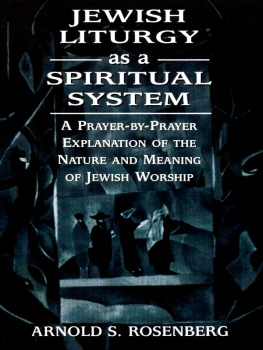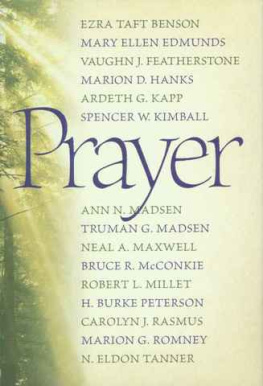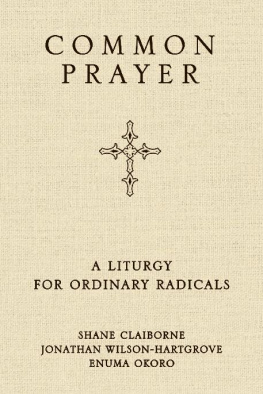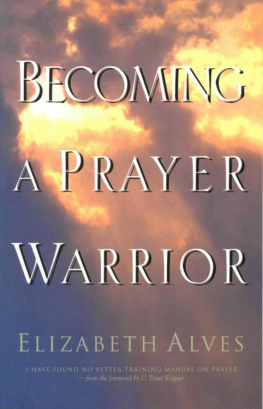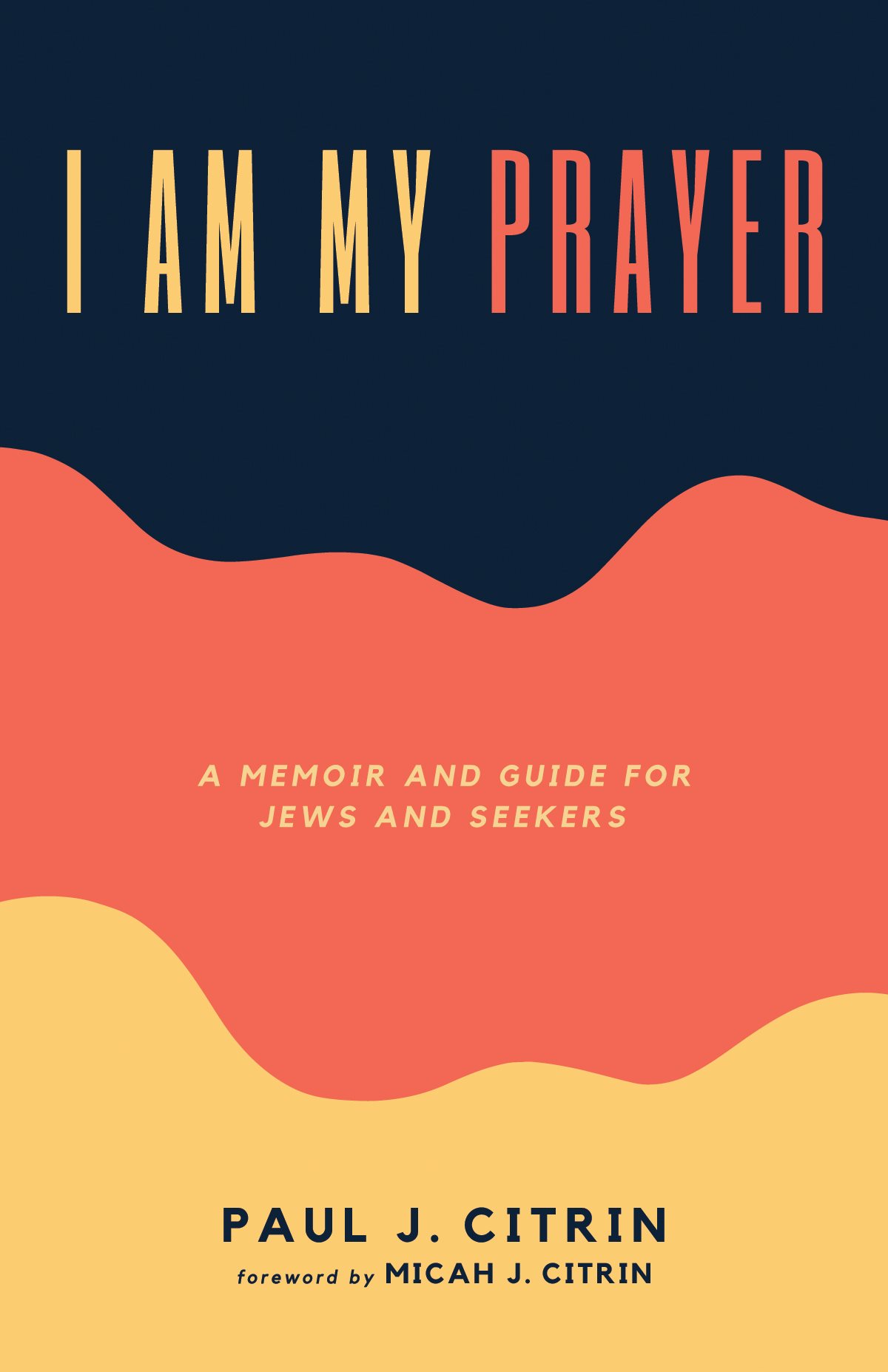I Am My Prayer
A Memoir and Guide for Jews and Seekers
Paul J. Citrin
Foreword by Micah J. Citrin
I Am My Prayer
A Memoir and Guide for Jews and Seekers
Copyright 2021 Paul J. Citrin. All rights reserved. Except for brief quotations in critical publications or reviews, no part of this book may be reproduced in any manner without prior written permission from the publisher. Write: Permissions, Wipf and Stock Publishers, W. th Ave., Suite , Eugene, OR 97401 .
Resource Publications
An Imprint of Wipf and Stock Publishers
W. th Ave., Suite
Eugene, OR 97401
www.wipfandstock.com
paperback isbn: 978-1-7252-9585-8
hardcover isbn: 978-1-7252-9584-1
ebook isbn: 978-1-7252-9586-5
03/26/21
Translations from Mishkan Tfilah: A Reform Siddur Shabbat , 2007 , are under the copyright protection of the Central Conference of American Rabbis and reprinted for use by permission of the CCAR. All rights reserved.
Permission is granted by Rabbi Mordechai Rotem to use Paul Citrins translation of his poem Avinu Malkeinu , entitled Questions We Ask Ourselves in Gods Presence. Rabbi Rotems piece appears in Kavanat Haleiv , the Israel Movement for Progressive Judaisms prayer book, pages -.
To my loving wife, Susan, and
To my supportive children,
Micah, Aaron, Shem, and Caleb, and
To my eight wondrous grandchildren.
Each of you is an answer to my prayer
that love may abide in my life.
Questions We Ask Ourselves in Gods Presence
Illumine for us our lifes path.
How can we understand the purpose of our existence?
How can we learn not to live vain lives?
How can we leave our indifference?
How shall we distinguish between truth and falsehood?
How shall we find the strength to answer our questions?
Be gracious, answer us, strengthen and encourage us,
For through You are the answers.
Rabbi Mordechai Rotem,
the Israel Movement for Progressive Judaism
Foreword
W hat is he doing up there with his eyes closed? Is he asleep? I used to ask myself this question when I was a young kid, sitting in the sanctuary watching my father, the rabbi, during silent prayer. He would invite the congregation to join for a few moments of silent meditation, then he would sit and enter his own personal prayers. I wondered where he went with his eyes closed and what was happening on the inside. Forty years later I have the answer to my questions. My father was not asleep, no, he was very much awake.
Good prayer, enlivening prayer, wakes us up and opens our consciousness. This is exactly what I Am My Prayer does, both as a self-described memoir and guide. Within its pages we become aware of the richness, tensions, and ultimately of the balance that animates Jewish prayer. My father invites us to join him in reflection on his prayer journey and in doing so to consider our own. He teaches by example and from a deep knowledge-base of more than forty years in the rabbinate.
The first thing that you will become aware of when reading this book is the importance of rooting our personal prayer lives within the communal heritage of Jewish prayer. We cannot help but come to prayer through our own experiences and the moments that shape our lives. Beginning with early childhood memories, my father shows how a life of prayer starts with personal choices and taking steps to enter a realm of active, regular, prayer. That can begin with the choices our parents make for us, but it solidifies with the choices we make for ourselves as we mature taking responsibility for our own lives. We see from the start that my fathers personal experience melds with the enduring prayer in his life in the synagogue. This memoir serves as an important rejoinder to popular cultures view of prayer, that it is an intensely personal journey inward. While this book begins with the personal, I Am My Prayer shows us how to mingle our own stories and yearnings with the stories and yearnings of the Jewish people preserved in the liturgy. When we understand how to connect the personal with the communal we stretch ourselves to occupy both essential domains of Jewish prayer.
Just as meaningful Jewish prayer invites us to straddle the personal and the communal, it also asks us to bring simultaneously our intellectual proclivities and spiritual sensitivities. This is no easy feat. I Am My Prayer enables us to do some of the intellectual work beforehand to open us spiritually in the moment of prayer. When we become aware of the dynamics, rationale, structure, flow, and poetry of Jewish prayer, we can pray in a more comfortable way. We become connoisseurs of the prayer aesthetic. This intellectual understanding frees us to be present for a soulful prayer experience. Here my father offers us his skill as a teacher clearly taking us step by step through the liturgy. He helps us to deepen our understanding of metaphor, the key to prayer language. And he guides us through different Jewish ideas about God by demonstrating in an accessible manner how he has personally adapted these theologies for his own life.
There are many books about Jewish prayer out there. This one is different in capturing the personal and the communal aspects of prayer and modeling how intellectual understanding enhances spiritual fulfillment. I Am My Prayer offers us a path toward a committed life of prayer and inspires us to build our own memoir of a life rooted in community, God, and personal meaning. It will help anyone who seeks to grasp communal prayer, Jewish or of another faith, and to make their time in church, mosque, temple or synagogue more relevant. I Am My Prayer will also remind the experienced pray-er of essential particular and universal characteristics of Jewish liturgy and how we might approach prayer to renew its power in our lives.
I am a rabbi now, and like my dad, I invite the congregation to take some time for silent prayer. I find myself closing my eyes. I look inward even as I seek to tear down the walls of self and ego searching for greater awareness and connection. I know that my fathers memoir does not conclude with him. His memories live in me. This is perhaps the true secret of Jewish prayer that this memoir reveals: our own prayers transcend us, living on through time, space, and community.
Rabbi Micah J. Citrin
Westwood, MA
Acknowledgements
T his book arrived at publication quality thanks to the insights, suggestions, and editing by precious friends and colleagues: Rabbis Micah Citrin, Geoffrey Dennis, and Connie Golden. Two educators who are themselves fine writers, Meredith Kopald and Barbara Weinstein, were also critical and key readers. My wife, Susan, has been an engaged listener and gentle questioner during the entire writing process. Each of these readers has my love and gratitude.
Special thanks go to my granddaughter, Shosha Wheeler, for providing her technical skills. Her talent brought the manuscript to its final stage of preparation.
My Israeli brother of fifty seven years, Rabbi Moti Rotem, kindly permitted me to translate and use as an epigraph, Questions We Ask Ourselves in Gods Presence. I have long admired his poetic sense and creative liturgical writing.
The editors at Wipf and Stock have been encouraging along the way. Their prompt responses to my queries bolstered me through the publication process.
Over several decades, I have been privileged to teach liturgy and prayer to teens and adults. From my students I have gained wisdom. Their searching, questioning, and original writings have elucidated my thinking on the meaning of prayer in my life. I learned that my life and my actions, ultimately, are my prayer.


![The Standing Commission on Liturgy and Music - Daily Prayer for All Seasons [English Edition]](/uploads/posts/book/411072/thumbs/the-standing-commission-on-liturgy-and-music.jpg)
